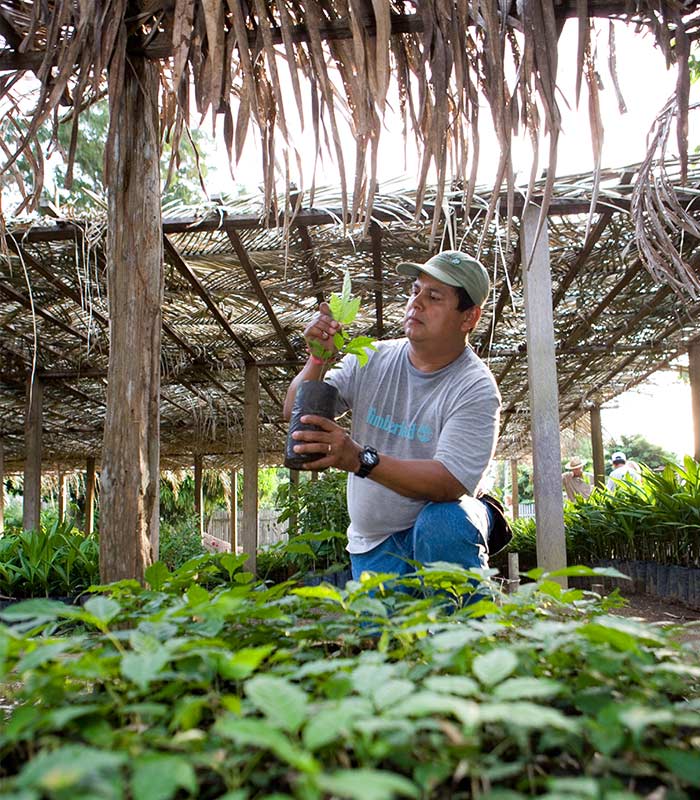Fighting Deforestation & Poverty with Sustainable Soy
After opening a soy processing site in Brazil, Cargill partners with a conservation group to help protect the Amazon.
January 01, 2015
Communities in the Amazonian Basin of Brazil have long struggled with a complex challenge: how to help residents participate in the region’s economy without inviting further destruction of the area’s precious natural resources. After Cargill opened a soy export terminal in the rural region of Pará in 2003, it began working closely with The Nature Conservancy (TNC) to answer the call. Together, they created a solution that empowers Brazil’s local farmers and protects its rainforests.
Strategically located at the intersection of the Amazon and Tapajós rivers in the city of Santarém, Cargill’s state-of-the-art terminal gave smallholder farmers in the northern region easier access to export ships and also provided those vessels quicker access to the Atlantic Ocean. But initially, conservation groups feared that the terminal would advance deforestation by encouraging farmers to clear and burn rainforests to make room for crops.
To alleviate these concerns, Cargill collaborated with TNC to establish the More Sustainable Soy Program in 2004, which aims to support the Brazilian Forest Code implementation and helps expand soy into previously cleared areas, preventing deforestation. By only accepting sustainably harvested soy from non-deforested lands, Cargill and TNC provide farmers incentive to comply with the code, which stimulates economic growth while protecting environmental resources.
“I don’t know of any other company that is helping its suppliers get into compliance. This is the only state in Brazil where big business is active in fostering conservation of the Amazon.”
— Benito Guerrero, Project Director, The Nature Conservancy, 2010
The steps taken by Cargill and TNC have led to significant improvements. Santarém was able to stabilize deforestation in just six years, a feat some predicted would take a century to accomplish. What’s more, in 2014, Brazil announced that deforestation in the Amazon had dropped by nearly 80%, and in recent years Santarém has not reported any instances of deforestation.
Today, Cargill and TNC continue to lend Pará support while the government prepares to take over monitoring of the Amazon region. Cargill also plans to further expand its export terminal, creating an infrastructure that will help Brazil’s agricultural community continue to thrive.

[image caption] Benito Guerrero of TNC inspects a native Amazon ype tree as part of the More Sustainable Soy Program’s efforts to rebuild the rainforest.
